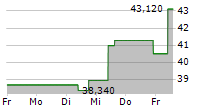
NEW YORK, NY / ACCESSWIRE / October 18, 2024 / Finance is an important part of our lives, but some aspects may not be thoroughly taught in schools. That's why it's important for parents to help educate their kids on how to manage money.
It can be helpful for children to have a basic understanding of money basics like budgeting, credit cards, personal loans, and saving. By prioritizing having conversations about money with your kids, you can help set them up for a financially secure future. Here are at least five things you should teach them.
1. Wants vs. Needs
To help emphasize the importance of saving money, define the difference between wants and needs. While wants are extras that are nice to have, like candy, toys, and the latest smartphone, needs are essentials that are needed to live, such as food, shelter, and healthcare.
Depending on the age of your kids, you can point to random objects in your home and ask them whether they would be considered wants or needs. Explain that their money should first be put toward needs as they're more important than wants.
2. Savings Goals
You can go on and on about why your kid should save money, but the best way to really drive the point home is to encourage them to save for a specific goal. For example, if your son or daughter wants to go to the amusement park, ask them to save their allowance until they have enough to buy a ticket.
Help them do the math and figure out how much they have to save each month to meet their goal. You can also create a savings chart they can use to track their progress visually and stay motivated.
3. Credit Cards
Depending on your kid's age, you may want to give them a starter credit card. This way, they can understand how borrowing money works and get in the habit of paying either the minimum or the entire balance on time. It's also important to explain that if your child only pays the minimum balance, they'll also have to pay interest on the balance, and it will take much longer to pay off the credit card.
A credit card can also teach them to live within their means and avoid overspending. You can add your child as an authorized user on your credit card or allow them to have their own credit card with a small limit (this will depend on the age at which the creditor allows someone to have their own card). There are also credit cards designed for students that may even come with the ability to earn rewards. A credit card teaches how to spend responsibly, and it may even build their credit history and score and help them independently qualify for financial products down the road.
4. Interest
The concept of interest can be confusing to kids and adults alike. Explain how interest works and provide examples of earning interest on a savings account or paying it on a loan or line of credit.
You and your child can do some basic math to calculate what they'll pay in interest on a credit card if they don't repay their balance on time and in full.
5. Delayed Gratification
Many kids can't wait long for what they say they want. That's where the concept of delayed gratification comes in. It refers to a person's ability to resist an immediate reward to enjoy a more significant future reward.
If your child wants a new toy they saw on TV, for example, they could buy a cheaper one with their allowance right away or you could encourage them to save a little longer to afford the toy they really want that may cost a bit more. The latter option can help teach them the importance of delayed gratification firsthand.
Bottom Line
Even if your kids are young, it's never too early to start having conversations with them about the various aspects of earning, spending, and saving money. The sooner you start, the more comfortable they'll feel about asking you for advice and the more prepared they'll be for their future.
SPONSORED CONTENT
CONTACT:
Sonakshi Murze
Manager
sonakshi.murze@iquanti.com
SOURCE: OneMain Financial
View the original press release on accesswire.com


